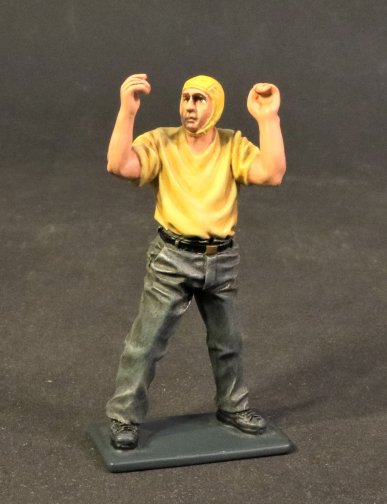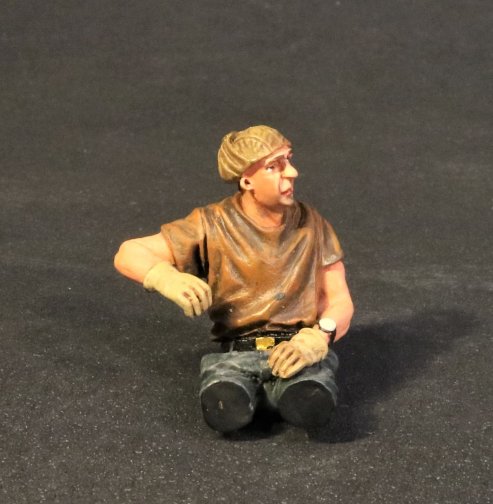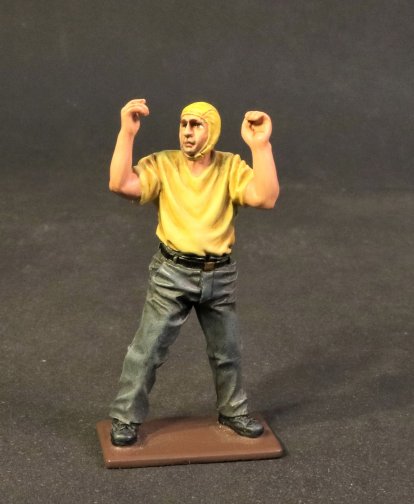NEW RELEASES FOR FEBRUARY 2020
AIRCRAFT CARRIERS
_2_.jpg)
USS Bunker Hill (CV/CVA/CVS-17, AVT-9) was one of 24 Essex-class aircraft carriers built during World War II for the United States Navy. The ship was named for the Battle of Bunker Hill in the American Revolutionary War. Commissioned in May 1943 and sent to the Pacific Theater of Operations, the ship participated in battles in the Southwest Pacific, Central Pacific and the drive toward Japan through Iwo Jima, Okinawa, and air raids on the Japanese homeland.
While covering the invasion of Okinawa, Bunker Hill was struck by two kamikazes in quick succession, setting the vessel on fire. Casualties exceeded 600, including 346 confirmed dead and an additional 43 missing, the second heaviest personnel losses suffered by any carrier to survive the war after Franklin. After the attack, Bunker Hill returned to the U.S. mainland and was still under repair when hostilities ended.
After the war, Bunker Hill was employed as a troop transport bringing American service members back from the Pacific, and decommissioned in 1947. While in reserve the vessel was reclassified as an attack carrier (CVA), then an antisubmarine carrier (CVS) and finally an Auxiliary Aircraft Landing Training Ship (AVT) but was never modernized and never saw active service again. Bunker Hill and Franklin were the only Essex-class ships never recommissioned after World War II
Fighter Squadron 84 or VF-84 was an aviation unit of the United States Navy. Originally established on 1 May 1944, it was disestablished on 8 October 1945. It was the first US Navy squadron to be designated as VF-84.
Yellow shirts are worn by plane handlers and plane directors that shuttle aircraft around the carrier’s tight and chaotic deck.

BH-30
THE SECOND WORLD WAR,
USS BUNKER HILL,
AIRCRAFT CARRIER FLIGHT DECK CREW,
PLANE HANDLER.
(1pc)
Brown shirts are worn most notably by Plane Captains. Plane Captains are responsible for overseeing the maintenance, launch and recovery and general well-being of their aircraft as well as the others in their squadron. The old adage is the plane captain is the one who truly “owns the jet,” and the pilot just borrows it for a couple hours at a time.

BH-32
THE SECOND WORLD WAR,
USS BUNKER HILL,
AIRCRAFT CARRIER FLIGHT DECK CREW,
PLANE CAPTAIN.
(1pc)
PLEASE NOTE THE BH-15, BH-18B, BH-19B , AND BH-20B SETS HAVE NOW BEEN REPAINTED, WITH THEIR NUMBERS CHANGED FROM 8 TO 9.
_1_.jpg)
BH-15(9)
THE SECOND WORLD WAR,
USS BUNKER HILL,
AIRCRAFT CARRIER FLIGHT DECK CREW,
2 DECK CREW WITH CHOCS.
(6pcs)
.jpg)
.jpg)
.jpg)
BH-18B(9)
THE SECOND WORLD WAR,
USS BUNKER HILL,
AIRCRAFT CARRIER FLIGHT DECK CREW,
2 DECK CREW WALKING.
(2pcs)
AIRCRAFT CARRIERS
_2_.jpg)
USS Bunker Hill (CV/CVA/CVS-17, AVT-9) was one of 24 Essex-class aircraft carriers built during World War II for the United States Navy. The ship was named for the Battle of Bunker Hill in the American Revolutionary War. Commissioned in May 1943 and sent to the Pacific Theater of Operations, the ship participated in battles in the Southwest Pacific, Central Pacific and the drive toward Japan through Iwo Jima, Okinawa, and air raids on the Japanese homeland.
While covering the invasion of Okinawa, Bunker Hill was struck by two kamikazes in quick succession, setting the vessel on fire. Casualties exceeded 600, including 346 confirmed dead and an additional 43 missing, the second heaviest personnel losses suffered by any carrier to survive the war after Franklin. After the attack, Bunker Hill returned to the U.S. mainland and was still under repair when hostilities ended.
After the war, Bunker Hill was employed as a troop transport bringing American service members back from the Pacific, and decommissioned in 1947. While in reserve the vessel was reclassified as an attack carrier (CVA), then an antisubmarine carrier (CVS) and finally an Auxiliary Aircraft Landing Training Ship (AVT) but was never modernized and never saw active service again. Bunker Hill and Franklin were the only Essex-class ships never recommissioned after World War II
Fighter Squadron 84 or VF-84 was an aviation unit of the United States Navy. Originally established on 1 May 1944, it was disestablished on 8 October 1945. It was the first US Navy squadron to be designated as VF-84.
Yellow shirts are worn by plane handlers and plane directors that shuttle aircraft around the carrier’s tight and chaotic deck.

BH-30
THE SECOND WORLD WAR,
USS BUNKER HILL,
AIRCRAFT CARRIER FLIGHT DECK CREW,
PLANE HANDLER.
(1pc)
Brown shirts are worn most notably by Plane Captains. Plane Captains are responsible for overseeing the maintenance, launch and recovery and general well-being of their aircraft as well as the others in their squadron. The old adage is the plane captain is the one who truly “owns the jet,” and the pilot just borrows it for a couple hours at a time.

BH-32
THE SECOND WORLD WAR,
USS BUNKER HILL,
AIRCRAFT CARRIER FLIGHT DECK CREW,
PLANE CAPTAIN.
(1pc)
PLEASE NOTE THE BH-15, BH-18B, BH-19B , AND BH-20B SETS HAVE NOW BEEN REPAINTED, WITH THEIR NUMBERS CHANGED FROM 8 TO 9.
_1_.jpg)
BH-15(9)
THE SECOND WORLD WAR,
USS BUNKER HILL,
AIRCRAFT CARRIER FLIGHT DECK CREW,
2 DECK CREW WITH CHOCS.
(6pcs)
.jpg)
.jpg)
.jpg)
BH-18B(9)
THE SECOND WORLD WAR,
USS BUNKER HILL,
AIRCRAFT CARRIER FLIGHT DECK CREW,
2 DECK CREW WALKING.
(2pcs)


.jpg)
.jpg)
_2_.jpg)

_1_.jpg)
.jpg)
.jpg)
.jpg)